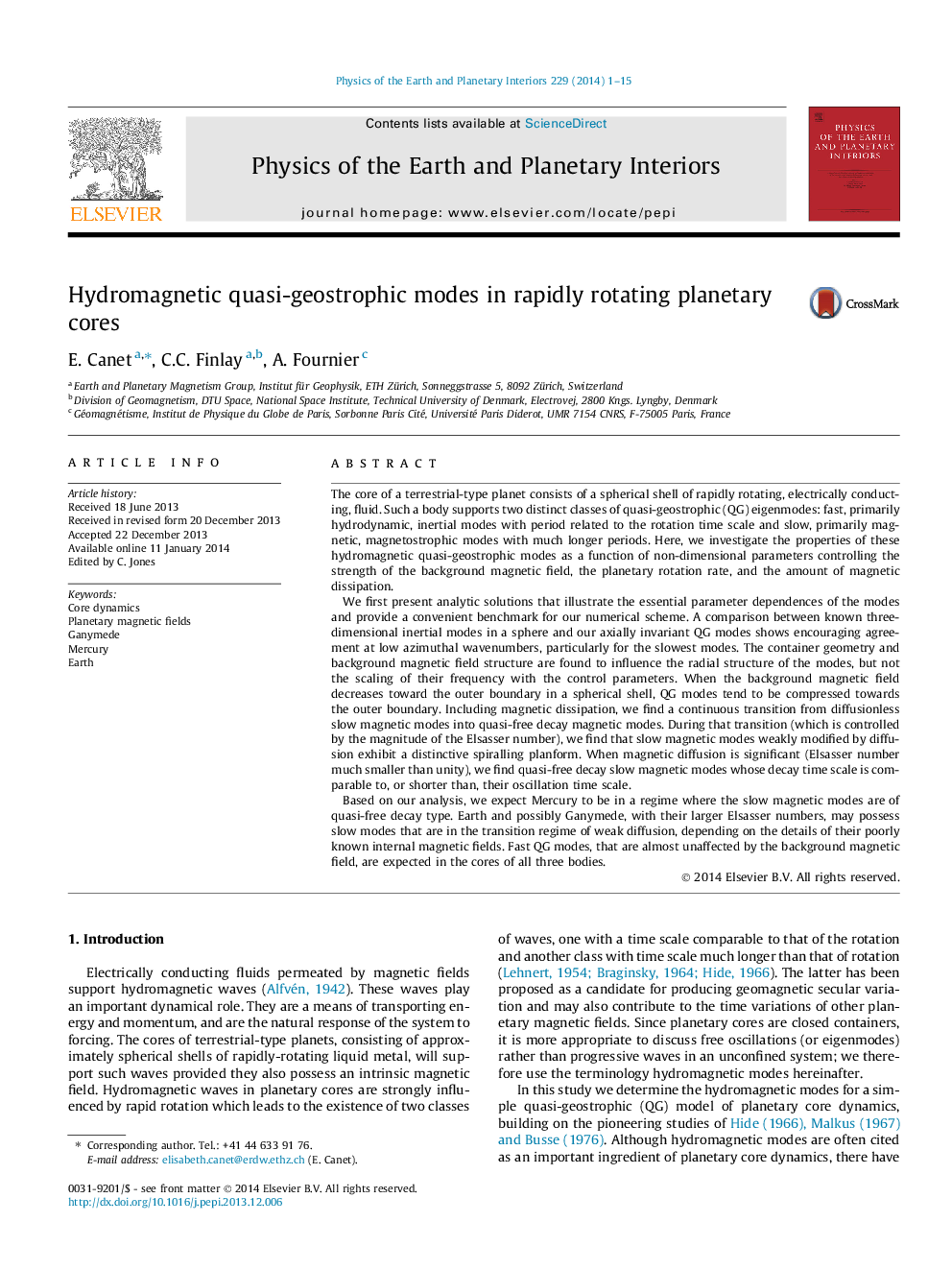| کد مقاله | کد نشریه | سال انتشار | مقاله انگلیسی | نسخه تمام متن |
|---|---|---|---|---|
| 4741623 | 1641512 | 2014 | 15 صفحه PDF | دانلود رایگان |
• We present quasi-geostrophic eigenmodes for cores of terrestrial-type planets.
• Dependence of mode properties on Lehnert and Lundquist numbers is documented.
• Magnetic diffusion causes slow modes to rapidly decay, especially in Mercury’s core.
• Fast modes will play important roles in the cores of Earth, Ganymede and Mercury.
The core of a terrestrial-type planet consists of a spherical shell of rapidly rotating, electrically conducting, fluid. Such a body supports two distinct classes of quasi-geostrophic (QG) eigenmodes: fast, primarily hydrodynamic, inertial modes with period related to the rotation time scale and slow, primarily magnetic, magnetostrophic modes with much longer periods. Here, we investigate the properties of these hydromagnetic quasi-geostrophic modes as a function of non-dimensional parameters controlling the strength of the background magnetic field, the planetary rotation rate, and the amount of magnetic dissipation.We first present analytic solutions that illustrate the essential parameter dependences of the modes and provide a convenient benchmark for our numerical scheme. A comparison between known three-dimensional inertial modes in a sphere and our axially invariant QG modes shows encouraging agreement at low azimuthal wavenumbers, particularly for the slowest modes. The container geometry and background magnetic field structure are found to influence the radial structure of the modes, but not the scaling of their frequency with the control parameters. When the background magnetic field decreases toward the outer boundary in a spherical shell, QG modes tend to be compressed towards the outer boundary. Including magnetic dissipation, we find a continuous transition from diffusionless slow magnetic modes into quasi-free decay magnetic modes. During that transition (which is controlled by the magnitude of the Elsasser number), we find that slow magnetic modes weakly modified by diffusion exhibit a distinctive spiralling planform. When magnetic diffusion is significant (Elsasser number much smaller than unity), we find quasi-free decay slow magnetic modes whose decay time scale is comparable to, or shorter than, their oscillation time scale.Based on our analysis, we expect Mercury to be in a regime where the slow magnetic modes are of quasi-free decay type. Earth and possibly Ganymede, with their larger Elsasser numbers, may possess slow modes that are in the transition regime of weak diffusion, depending on the details of their poorly known internal magnetic fields. Fast QG modes, that are almost unaffected by the background magnetic field, are expected in the cores of all three bodies.
Journal: Physics of the Earth and Planetary Interiors - Volume 229, April 2014, Pages 1–15
